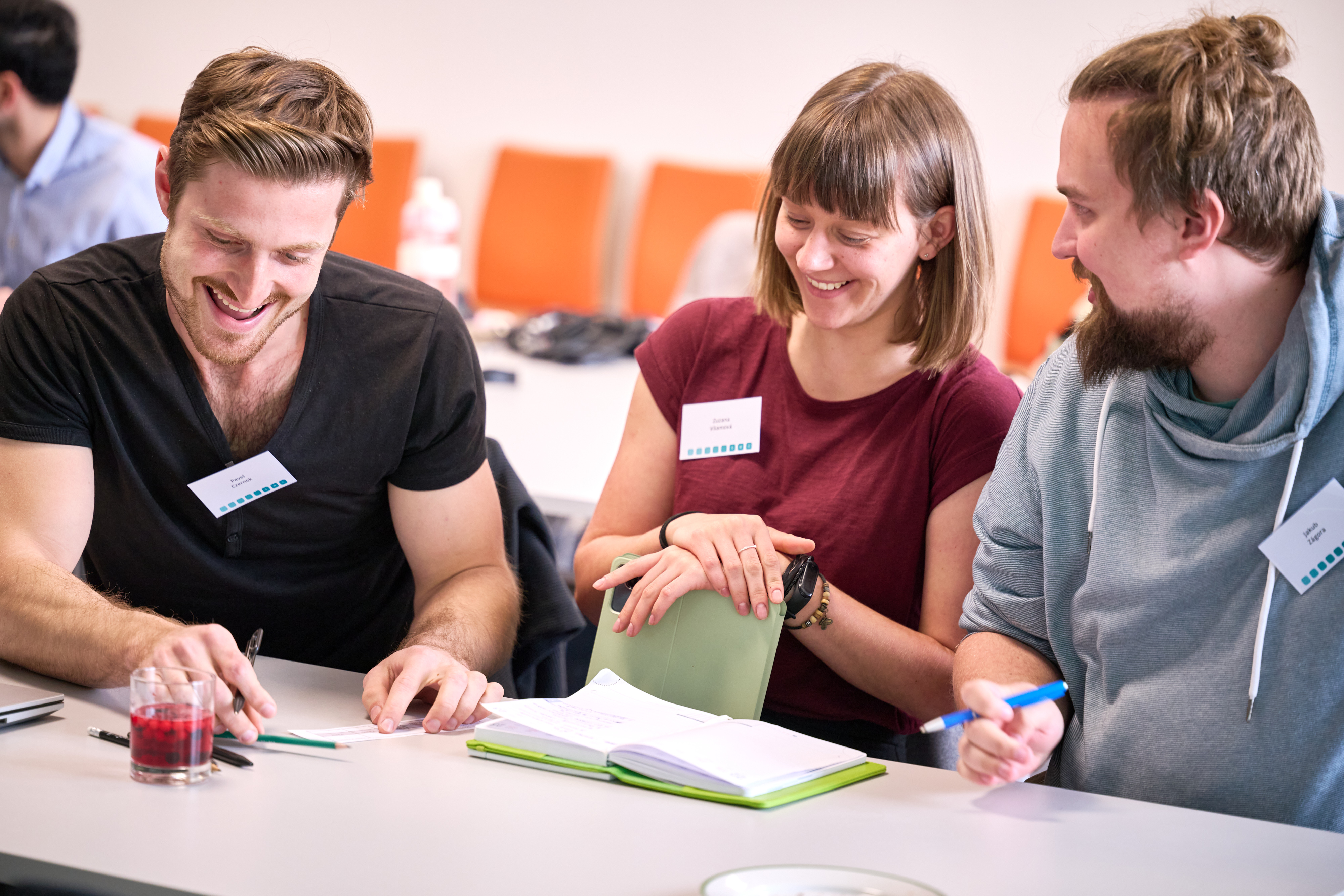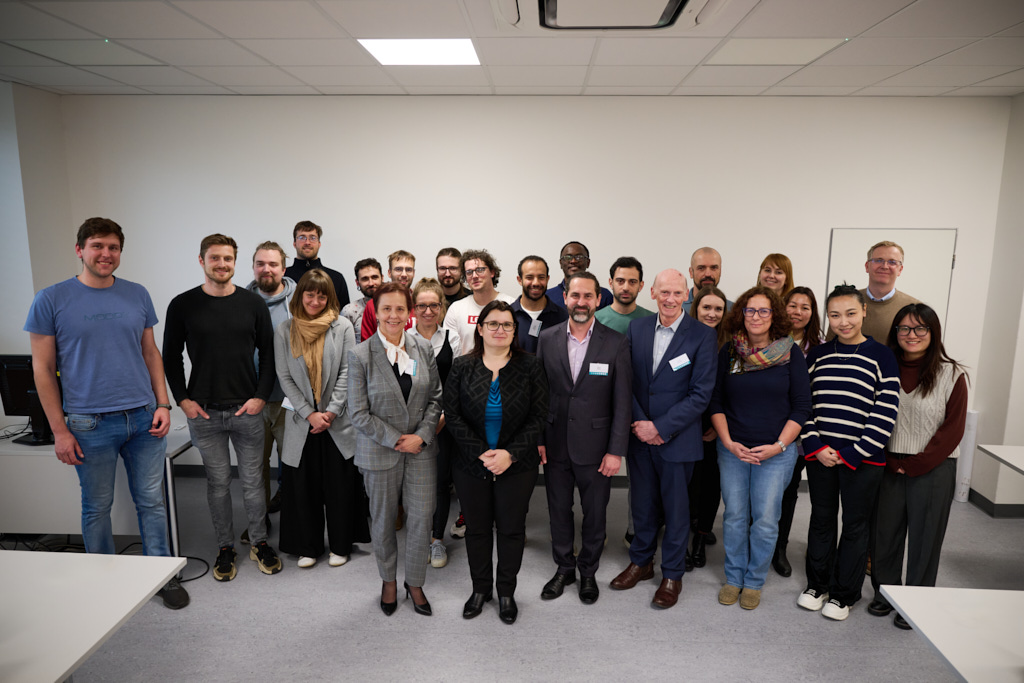Congratulations on second place, and I also want to ask you, what motivated you to participate in the Scientific Writing Camp?
We are PhD students in Nanotechnology program at the Faculty of Materials Science and Technology VSB-TUO and we are also involved in CEET CNT projects. Each of us is working in a different area of materials synthesis and application. Zuzana Vilamová focuses on electrospinning of polymer membranes with carbon nitride deposition and applications in photocatalysis, Jakub Zágora on synthesis of polymers and hydrogels for antimicrobial applications and Pavel Czernek on synthesis of carbon-based materials and their application in composite materials. Together we formed the NanoTech team and in the same team we participated in the first edition of the Scientific Writing Camp (SWC) organized in 2022. In this first edition we won the 2nd place together with a team of colleagues from CEET IET, with whom we found a common topic after intensive work. The collaboration resulted in a paper that is now "under review" in Applied Surface Science. The past success has motivated us to participate in the next edition and we have taken the opportunity to meet other PhD students, try something new, but most importantly have fun.

In this year's edition, you formed a team called NanoExplorer. What was the main purpose and content of the project you worked on as a team?
Our team collaborated with our colleague Martin Mánek from the Department of Applied Mechanics and Štěpán Pravda from the Department of Mechanical Engineering both from the Faculty of Mechanical Engineering. The goal of the SWC teams was to come up with a plan that would integrate the research interests of all participating members in a feasible manner, with results that had the potential to be published in a scientific journal (Q1). After a passionate discussion, we agreed on a topic that included the areas of interest of all our members and we focused on incorporating carbon nitride and resin beads as secondary fillers into polymer composites reinforced with carbon fibers (CFRP).
Zuzana Vilamová will be in responsible for the synthesis of carbon nitride with the smallest possible particle size and the largest number of amine functional groups reacting with epoxy resin, Jakub Zágora will focus on the issue of polymer - epoxy matrix, Pavel Czernek will prepare resin beads with a focus on the issue of carbon fibers and the preparation of CFRP composite materials, Martin Mánek will use his experience in the preparation of CFRP composites from Formula TU Ostrava and together with Štěpán Pravda, who has found theoretical applicability in structures for the aerospace industry, will focus on the preparation and mechanical testing of CFRP composites.
Your project sounds very interesting. What innovative elements does it bring, and what was its main inspiration?
The addition of secondary fillers to the interlaminar layers of CFRP composites to enhance their mechanical properties has been studied for many years. Typically, researchers add small amounts of inorganic fillers such as silica nanoparticles, modified graphene layers or other carbon materials. While such materials can improve strength, they can do so at the expense of the toughness of the composite material. This can result in a more brittle composite, which is not an ideal characteristic in the event of impact with the composite material. Of course, other materials have been used such as core-shell modified silicone beads and others that have been able to improve toughness at the expense of strength thus improving mechanical properties even in freezing conditions, making them ideal for aircraft applications at high altitudes. This should also be the case with resin beads and carbon nitride, or the use of a combination of the two based on ideal surface chemistry with epoxy resin and the mechanical properties of these materials. The advantage of these materials is their simple, cheap and inexpensive synthesis.
Our inspiration comes from the need to improve both strength and toughness without compromising one for the other, aiming to create a more resilient composite material suitable for high-impact and high-altitude conditions.
Surely, you encountered various challenges throughout the event. Were you able to overcome them?
At the beginning, we struggled to agree on the best topic that we could realistically complete within such a short timeframe. We also worked on an alternative project, which was the creation of a protective box for the battery storage of electric cars. However, during our discussions, we agreed that this topic did not align with the focus areas of all team members. In general, we think that the biggest challenges are yet to come. We would like to continue working on this project, but having an idea and a theory is one thing, and it doesn't always align successfully with practical application. We have many alternatives to to consider in approaching our initial idea, and we will see where it eventually takes us.
Cooperation is a significant part of a joint project. Were you able to select a suitable topic as a team, and how did you address any disagreements or differing opinions within the group?
Apart from the initial disagreements over the choice of project, our collaboration ran very smoothly. Each member took charge of the section they understood best, and together we conducted a literature review and prepared the presentation. We addressed disagreements and differing opinions through mutual arguments and discussions. However, discussions and compromises were, are and will be an integral part of our cooperation.
During the SWC, you surely received feedback from mentors and other participants. Did it help you?
The mentors continually pushed us forward in important aspects of how to develop and pitch our proposed project. Unlike other teams, we arrived at our topic relatively quickly and naturally, so the mentors spent less time with us than with other colleagues. We meet regularly with participants from other teams. We chat with colleagues over coffee, share updates on our project's progress, and then get back to work. This experience made us realize what can be accomplished at the university and that our research is just a small piece of a much larger puzzle.
What did you gain from this academic meeting?
During SWC you work in a team, engage in a lot of discussions, search for information and articles, present, and persuade. It is an intensive two days of work where you improve your soft skills such as teamwork, communication, persuasion and presentation skills, but you also learn the skills that come with research work.
Second place is a great achievement. Did it lead to any wild celebrations?
I won't lie, we wanted to win. However, another second place and the reward that comes with it made us very happy. We celebrated it with a long sleep because we were quite exhausted by the end of the SWC. It may not seem like it, but it is very challenging to come up with something that is meaningful in such a short period of time, while also ensuring that the topic can be realized within a year to make a publishable article.

This success surely isn't the end. Do you have any plans for the further development of the project, and what are your other academic or professional expectations?
We are determined to work on our project and bring it to the desired results. We have the equipment, the collaboration and the desire to work on it, so we will see how it goes. Our future visions and work beyond this project are diverse. Pavel Czernek is currently working on his PhD thesis and on the PROJECT REFRESH and SAFER project, and he is looking forward to a month-long internship in Germany at the Technical University of Chemnitz, focusing on Carbon/Carbon composites. Zuzana Vilamová will soon defend her doctoral thesis and and we will support her. She is convinced that there will be plenty of work on projects and research ideas. Jakub Zágora is finishing his doctoral thesis and is also part of a research team involved in the MATUR project.
Do you have any advice for future participants of the Scientific Writing Camp and for those who want to take a similar step in their academic careers?
We would definitely encourage future participants not to be afraid of the SWC and to give it a try because there's nothing to lose and you can only gain from it. At the same time, the energy invested pays off in the form of scholarships paid to the placed teams. In our micro-team, we may be able to invent material, but without the ability to properly test and then apply it, our research is meaningless. At the same time, one also encounters a different style of thinking; we as chemists think and look at things a little differently than people from the Faculty of Mechanical Engineering or the Faculty of Economics. In terms of strategy, micro-teams and SWC teams should be composed as interdisciplinary as possible. Weak interdisciplinarity is something that has been pointed out to us every time. In conclusion, we would like to add that we are glad for making new contacts and for finding out what is possible at the VSB – TUO.
Pavel Czernek: "The biggest challenge was to convince my colleague Štěpán that we had chosen a topic that we could come up with and implement in a few hours."
Zuzana Vilamová: "I think the biggest challenges are yet to come. We would like to continue our work, but an idea and theory is one thing, and it doesn't always successfully meet practice."
Jakub Zágora: "The key to success is to find a compromise between a topic that captures the attention of the jury and the ability of the team to implement the topic within a year so that it will result in an article."